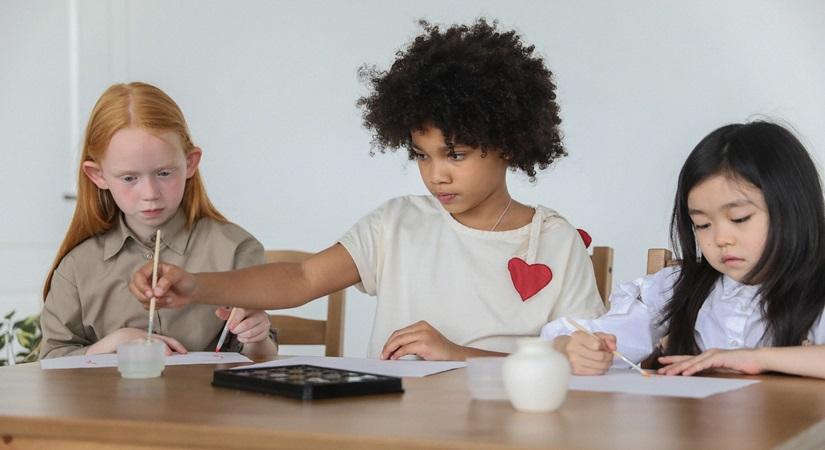Cover Story
Tips to inculcate habits of playing with sustainable toys

In your little toddler
By IANSlife
November 09, 2022 (IANSlife) Children do not grasp the term "sustainable," but their parents do. Parents obsess over introducing new words to their toddlers as early as possible. Thank you, sorry, and please, it is time to add Planet's GOOD to the Good Habits handbook.
Kids' developing brains are highly approachable and sensitive to their surrounding environments. They continually learn through the medium of people, objects, and the surrounding ambience. Hence, it's best to surround them with toys and games at home and schools, which are made from good quality plastic, or recycled materials that can help set the foundation for Eco-conscious choices early on.
Children’s Nature assertive, waste-negative play can be aided through conscious buys in the following areas suggest Krishna Vyas, General Manager and Director Office of the Stone Sapphire India PVT LTD:
- Wooden toys: Wooden toys are a practical alternative to resorting to plastic ones. Ensure to invest in sustainable wooden toys that have been painted using lead-free colours. You can fairly recognize safe wooden toys from their handmade cuts, and body painted with natural vegetable dyes. The inks being natural would shine less than a smooth vibrant coat of chemical paints on conventional toys. Toxicity however of Natural paints is negligible, plus wooden toys are a long-lasting durable choice. Naturally, (no pun intended) “Choose Safe over Attractive.”
- Building blocks: Building blocks are key development drivers at an early age. Made available in diverse shapes and sizes, these are excellent learning apparatuses for pre-schoolers. Since they are low-maintenance toys, played handled, stored and carried almost in any sack, any area, the plastic material should ideally be of high quality. The cut and moulds of these toys, make a great difference in their play value and offer a good deal of possibilities in making various structures. Look out for the compliances, CE and BIS marks on the pack. These certifications ensure the material is child safe, recyclable, and Plastic positive. Certified plastic toys are either virgin plastic sourced from valid sources, or recycled plastic but treated to be non-harmful.
- STEM Sets: “build your own play” is the most immersive play experience we can expose children to. They fuel creativity beyond the game manuals and force cognitive thinking quite effortlessly. Try to pick DIY (do it yourself) toys that cover different disciplines like chemistry (make your shampoo) or topography (build your own volcano) for example. The Planet consciousness idea can easily be presented by virtue of studying the recipe or ingredients of the toy. Sand, Mud, water, Borax powder, Vegetable paints, and soda are used by kids first-hand to create their own miniature environments and can offer heightened awareness towards resources, man-made and natural. More exposure to different materials and chemicals (child-safe certified amounts) early on will encourage children to recognize the difference between natural and artificial components and can assist later in making a better choice in their own consumables.
- Playing Dough and Modelling Clay: Natural Mud, Beach Sand, and Clay in our palms are probably the most tangible output of earth that can help sensitize anyone about nature. While you can’t take your family to a seashore every day, or pick a trek every week in jungles, get hold of Modelling Clay and Modelling Dough toys in your home. These toys, bring the same sensory feeling of the earth to toddlers’ fingers, while also boosting creativity and freehand work. Clay and dough with a mix of colours appeal to the ingenious side. Artistic skills to mould them into various objects and shapes. they ensure longer hours of play, break and remake again quality, and can be adaptable with even random objects balls, confetti, spare buttons, extra bottle caps, woollen threads or old socks etc to create animals, butterflies, a table and chair set or a colourful doll. Note how, on disposal as well, dough and clay are 100% biodegradable. When used or exposed to sunlight for a prolonged time, it would decompose with fungus, again working in line with the natural ecosystems. Look out for Gluten-free, Non-Toxic, Made our rice flour Dough for longevity. Priced reasonably, even repeated consumption of these toys would create negligible waste and majorly non-pollutants.
- Recycled Paper Crafts: For pre-schoolers, a good activity would be making use of recycled paper in various forms. Did you know that even writing pencils, pens, incense sticks, dolls, roll play miniature models, or simply ornaments, wind chimes, and dream catchers can be created with old magazines or wrapping paper and some glue? Simply rolling and glueing and moulding with fingertips can create wonderful art pieces, without much need for any fancy use and throw décor items which usually are microplastics and glitter. Encourage creativity over single-use toys like balloons, low-density plastic PET utensils, dolls, thermocol models, use and throw ball pens, phthalate-based colour sticks etc.
- Steel or Metal Vehicles: expose children to auto-motive thrill with die-cast miniature cars or bikes. These toy vehicles composed of castoff zinc and plastic with just 1 per cent from non-recycled stainless steel, typically are made available in zero-plastic packaging made from paper and wood fibre.
- Wooden/cardboard puzzles: Perhaps the most obvious advantage of a wooden jigsaw puzzle is that it is far more hard-wearing, each puzzle piece tends to be stronger and more rigid. While choosing cardboard, notice how recycled paper pulps are now made into a strong durable writing desk, boards, board games and puzzles. There is always a choice if we look for it consciously.
(This article is website exclusive and cannot be reproduced without the permission of IANSlife)
IANSlife can be contacted at ianslife@ians.in


